Inking up
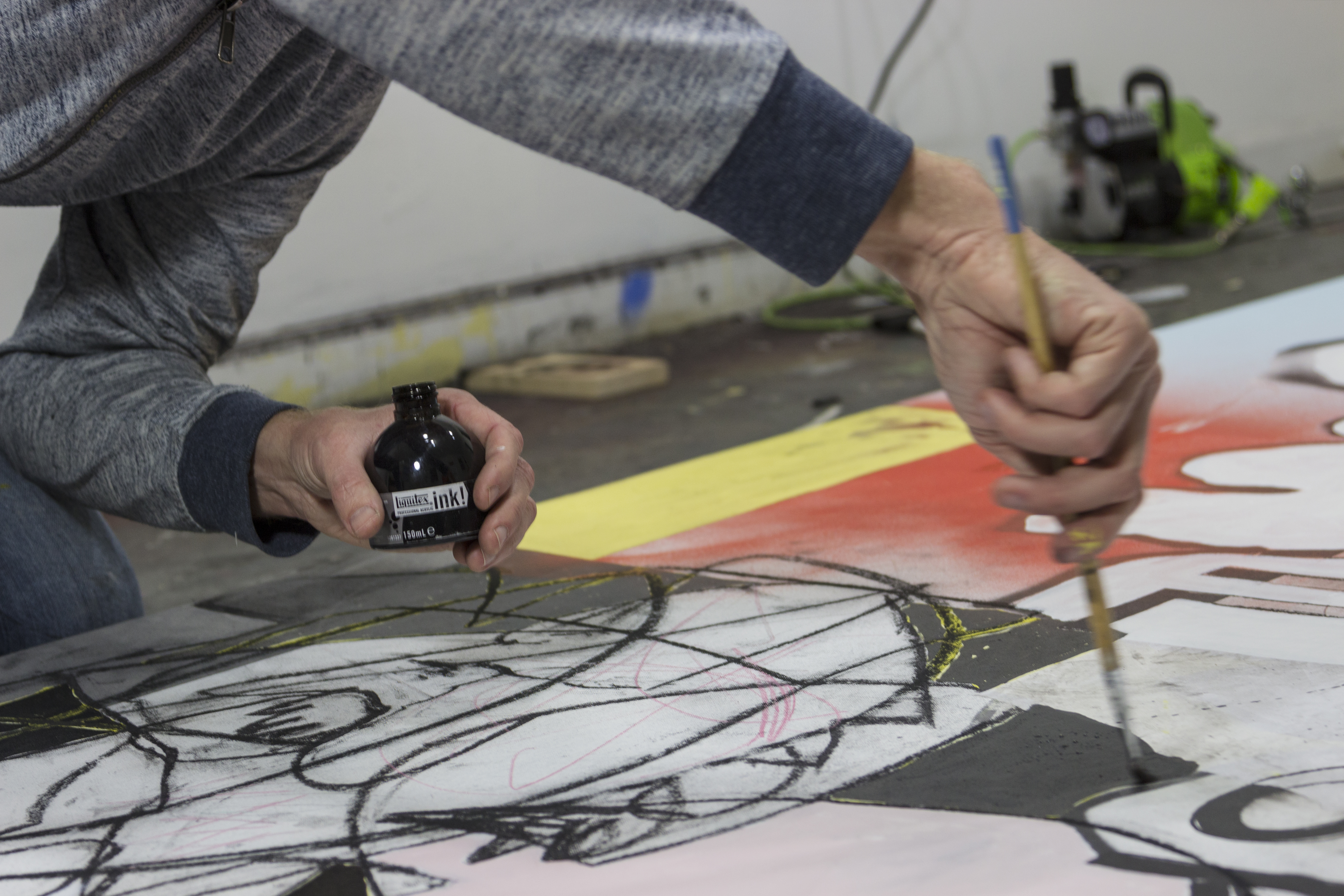
Ink has always been a go-to material for me and I have fond memories of collecting Windsor & Newton’s beautiful jars with the coloured labels as a teenager. My work at the time was comic book inspired and I used black ink with a nib and coloured these brightly with inks that sported canaries and dragons. Ink suddenly became a central aspect when I became artist in residence at Eton College. It was interesting to think about a medium, primarily in its absence. The wooden school desks all showed deep gorges and rivulets branching out from the hole designed to contain the ink well. Generations of boys had carved away at their desks to create inky waterways and small holes for lakes to catch the ink. I created a number of works with these benches, making bronze casts and photographs, culminating in Sleep of Reason II, which shows the ink frozen in mid flow, staining the bench and soaking the printed image and even the frames backing board.
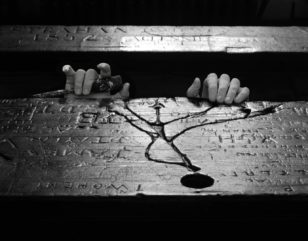
Ink was already in use around 4000 years ago by the Egyptians and exists in a multitude of recipes, with ingredients from petroleum and liquorice to sugar candy and copper. The most commonly used binder is gum arabic. Its universal characteristic is that the pigment is in a liquid form and its aqueous nature allows it to be used for writing and printing. I also used inks and nibs with reservoirs when I was at school, though blue and not black. The stained fingers and occasional blotch was a feature of all my school work. Fountain pens remain in use in schools despite the availability of markers that contain inks and pigments. There is a perception that they aid the development of good hand writing. For the Eton Project I wanted to use an ink that closely resembled the ink that might have been used by students. I chose Windsor and Newton’s India ink, a traditional Chinese stick ink.
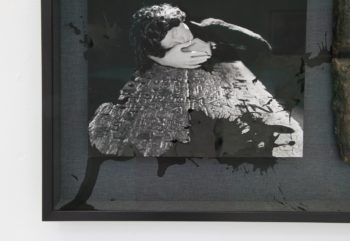
Detail of Sleep of Reason II, 2017, 120 x 70cm, mixed media
For the mixed media works on paper I experimented with a number of metallic inks and paints and had the best results with Liquitex acrylic inks. The benefit of these is that they can be intermixed with all other acrylic media and paints, which I made use of particularly in works where the ink forms the first layer of intervention into the photograph. Silver ink on black and white prints particularly reminded me of the decay of silver bromide photographs and created interestingly complicated surfaces. As I was working on these images during a residency at Espositivo Madrid, I gave some Liquitex inks to my fellow artist Taylor White who made good use of the mixing media aspect.
He says: “I’m a mixed media painter and I’m continually experimenting with the adhesion and mixability of many different types of paint, adhesives, and painting surfaces. Finding products like Liquitex that easily mix and bond together allows me to work quickly and to be completely confident that the materials I’m using will retain their structural integrity and will not fade or degrade over time.”
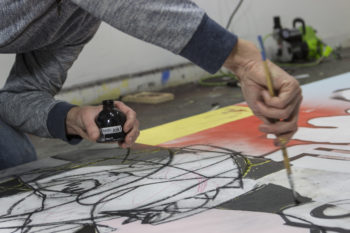
Taylor White using acrylic ink on canvas and spray paint
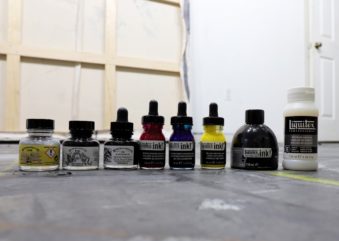
For me liquid pigment is interesting because of its irreversibility. Once the colour stains the paper it is final and permanent. This was the main focus of early experimentation in creating inks, using various chemicals to produce an indelible mark on paper or fabric, a reliable mark, suitable for important documents or signatures. The ink stained finger is still used today to mark those who have already voted in an election in some countries. For the book I created as part of Eton project I used pen and ink to write by hand the titles on each cover and to sign and edition the back. This was risky and messy and has resulted in not two books being the same. The project finally was about graffiti, the unofficial marking of walls and benches, the carving of names and trenches into school tables. I smeared my pristine books and prints in keeping with the tradition of all graffiti ‘I too was here’.
By Liane Lang

